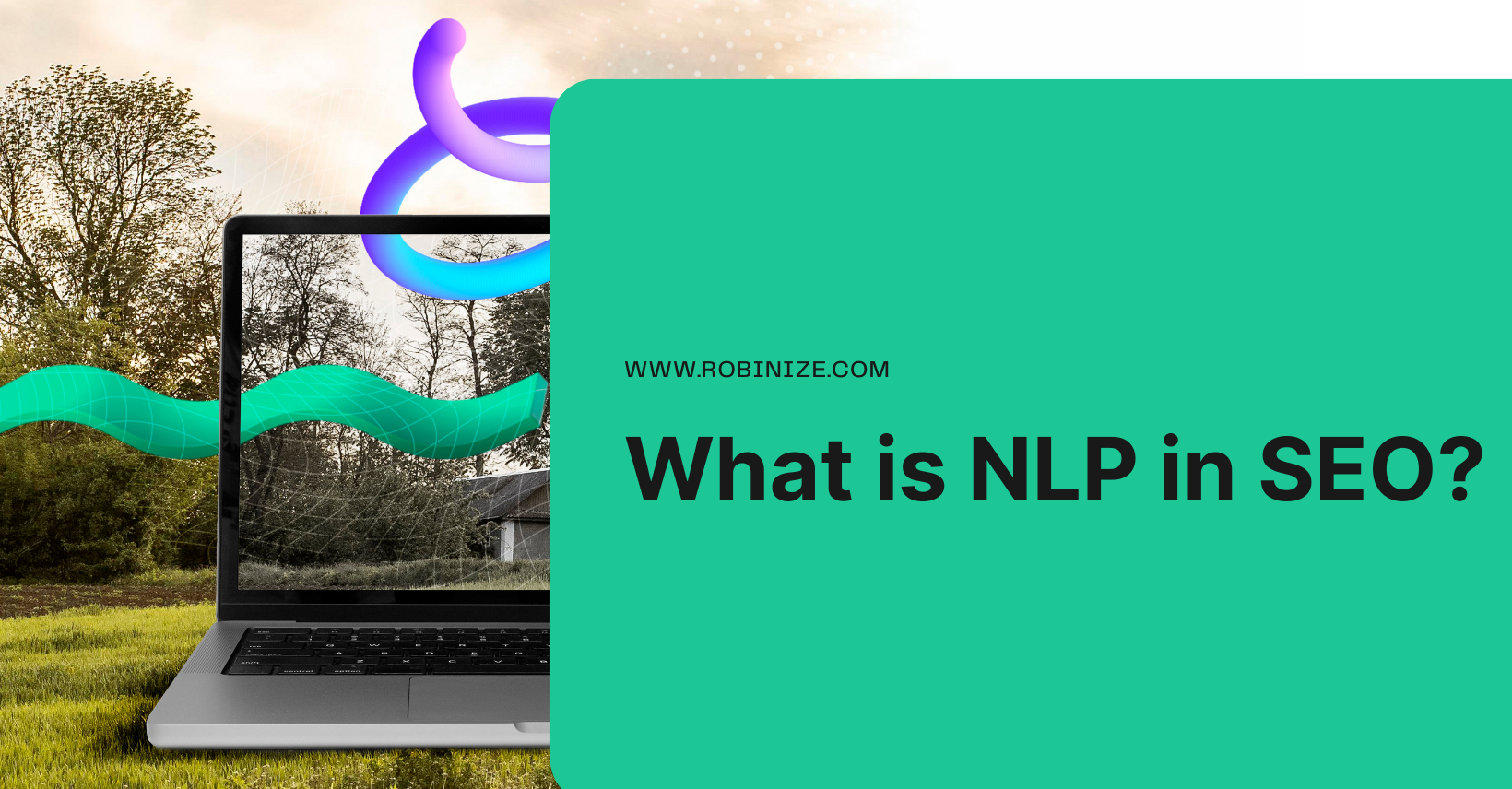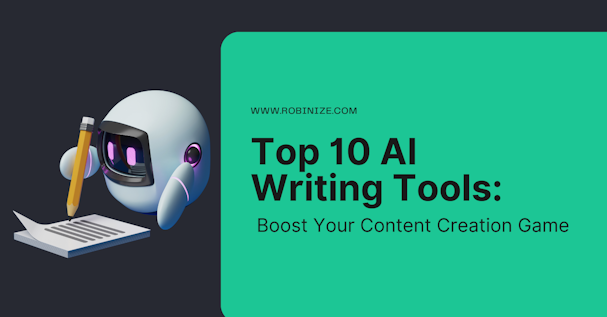What is NLP in SEO?


Have you ever interacted with a chatbot or used a voice assistant like Siri or Alexa? If so, you've already experienced the power of NLP.
NLP stands for Natural Language Processing. It is a field of computer science and artificial intelligence. NLP focuses on the interaction between computers and humans through natural language. It aims to enable computers to understand, interpret, and generate verbal and written human language.
Natural Language Processing has been around for over five decades, originating in linguistics. Today, it has many practical applications across various industries. Some examples include medical research, search engines, and business intelligence.
How does Natural Language Processing work?
There are several critical steps involved in NLP:
Tokenization
Part-of-speech (POS) tagging
Named Entity Recognition (NER)
Parsing
Sentiment analysis
Machine translation
Tokenization: The process of breaking up text into individual words or phrases (tokens)
Tokenization is a crucial process in Natural Language Processing (NLP). It involves breaking down a text document into smaller units (tokens)- words or phrases. Tokens are a foundation for further NLP processing (sentiment analysis, named entity recognition, and part-of-speech tagging).
Tokenization may appear simple, but it can be quite intricate. This is because it requires dealing with various language and text-related issues. These issues include word boundaries, capitalization, punctuation, contractions, abbreviations, and hyphenated words.
Tokenization can be achieved using different approaches, including using regular expressions to identify word boundaries such as spaces, special characters, and punctuation marks. But, this approach may only sometimes identify word boundaries in some contexts or languages.
Another approach to tokenization is using machine learning algorithms such as deep learning or neural networks to identify tokens based on patterns in the text. These techniques are trained on vast amounts of data to identify the most common token patterns.
Tokenization is vital in NLP, providing a foundation for many other NLP tasks. You can analyze the underlying structure and meaning of the text by breaking down a text document into individual tokens. This can help extract valuable insights and information.
Part-of-speech (POS) tagging: Identifying the grammatical parts of speech of each word in a sentence (e.g., noun, verb, adjective)
Part-of-speech (POS) tagging is crucial in Natural Language Processing (NLP). It involves assigning a label to each word in a text document according to its corresponding part of speech. This label indicates whether a word is a noun, verb, adjective, adverb, and so on. It also helps to identify the grammatical sentence structure. Doing so provides valuable context and meaning in the next sequent in NLP processing.
But, POS tagging is challenging because many words can have different meanings based on their context. For instance, the term "bank" can refer to a financial institution, a riverbank, or the act of turning a corner. So, a POS tagger needs to consider the word itself and the words before and after it in the sentence to determine its part of speech.
POS tagging can be done using different techniques, such as rule-based methods, statistical methods, and machine learning algorithms. Rule-based methods rely on predefined sets of rules to identify the part of speech for each word based on the context and patterns of words. Statistical methods use probabilistic models trained on annotated text to predict the most likely part of speech for each word. Finally, machine learning algorithms use neural networks and decision trees to learn from vast amounts of data and then predict the part of speech for each word.

POS tagging is crucial in several NLP tasks. Some of them are sentiment analysis, named entity recognition and machine translation. By accurately labeling each word in a sentence with its part of speech, it helps to identify the grammatical structure and meaning of the text. This leads to better insights and information extraction from text data entity types.
Named Entity Recognition (NER): Identifying and categorizing named entities in a sentence, such as people, organizations, and locations
Named Entity Recognition (NER) is a crucial task in Natural Language Processing (NLP). It involves identifying and classifying named entities in a text document, such as people, organizations, locations, and dates. NER is an essential tool for extracting useful information from text data, such as identifying the key players in a news article or tracking the mentions of a brand or product in social media.
NER is challenging because named entities can take many forms and be referred to differently. For example, you can write a person's name in many formats, including first, last, middle, initial, or nickname. An organization may be referred to by its full name, abbreviation, or a common nickname.
Several approaches to NER include rule-based methods, statistical models, and machine learning algorithms. Rule-based methods use hand-crafted rules to identify named entities based on patterns of words and their context. Statistical models use probabilistic methods to identify the most likely named entity class for each word based on extensive training datasets of annotated text. Finally, machine learning algorithms use techniques like deep learning and neural networks to learn the patterns of language use from large amounts of data. After that, they use these patterns to predict the named entity class for each word.
NER is critical in many NLP applications. Some of them are information extraction, question answering, and machine translation. By correctly identifying named entities in a text document, we can gain a deeper understanding of its underlying meaning and structure. This can help us to extract valuable insights and information from text data.
Parsing: Analyzing the grammatical structure of a sentence to understand its meaning
Parsing is a critical task in Natural Language Processing. It involves analyzing the grammatical sentence structure to understand its meaning. Parsing is an essential tool for many NLP applications. Some of them include question-answering, machine translation, and information extraction.
Parsing involves breaking down a sentence into its constituent parts, such as nouns, verbs, adjectives, and adverbs, and then analyzing the relationships between these parts to understand the overall structure of the sentence. This process is known as syntactic analysis. It involves identifying each word or phrase's role in the sentence, such as subject, object, or predicate.
There are several different approaches to parsing. They include rule-based methods, statistical models, and machine learning algorithms. Rule-based methods use hand-crafted rules to identify a syntactic sentence structure based on word patterns and their context. Statistical models use probabilistic methods to identify a given sentence's most likely syntactic structure based on extensive training datasets of annotated text. Machine learning algorithms use techniques like deep learning and neural networks to learn the patterns of language use from large amounts of data. Then they use these patterns to predict the syntactic structure of a sentence.
Parsing is a challenging task. This is because the meaning of a sentence can be heavily influenced by its grammatical structure. For example, consider the sentence "The dog bit the man." If we change the order of the words to "The man bit the dog," the sentence's meaning is completely changed. By correctly parsing a sentence, we can gain a deeper understanding of its underlying structure and meaning. This can help us to extract valuable insights and information from text data.
Sentiment analysis: Identifying the emotional tone of a sentence, whether it's positive, negative, or neutral
Yet another important task in Natural Language Processing (NLP) is Sentiment analysis. It involves analyzing the emotional tone of a text document. Some examples are product reviews or social media posts. Sentiment analysis is an essential tool for businesses and organizations. This is because it can help them to understand how customers and stakeholders perceive their products and services.
Sentiment analysis involves using machine learning algorithms to identify the overall sentiment of a text document. That sentiment can be positive, negative, or neutral. This process consists in analyzing the words and phrases used in the text, their context, and the overall tone of the document. You can perform sentiment analysis at different levels, such as the sentence or document levels.
There are several approaches to sentiment analysis. They include rule-based methods, statistical models, and machine learning algorithms. Rule-based methods use hand-crafted rules to identify the sentiment of a text. This is based on the presence of certain words or phrases associated with positive or negative emotions. Statistical models use probabilistic methods to identify the most likely sentiment of a text based on extensive training datasets of annotated text. Finally, machine learning algorithms use techniques like deep learning and neural networks to learn the patterns of language use from large amounts of data. After that, they use these patterns to predict the sentiment of a text.
Sentiment analysis is a challenging task. This is because the emotional tone of a text document can be influenced by many different factors. Some of them are sarcasm, irony, and cultural context. But, when performed accurately, sentiment analysis can provide valuable insights into how customers and stakeholders perceive a product, service, or brand. As a result, businesses and organizations can make informed decisions about marketing strategies, product development, and customer engagement by analyzing sentiment data.
Machine translation: Translating a text from one language to another
Machine translation is also an important task in Natural Language Processing (NLP). It involves computer algorithms to translate text from one language to another. Machine translation has become an important tool in our globalized world. It enables people to communicate across language barriers and access information worldwide.
Machine translation analyzes the grammatical structure of a sentence in one language and generates an equivalent sentence in another language. This process is typically performed using statistical machine translation algorithms. They use large datasets of bilingual text to learn the language use patterns and identify the most likely translations for a given sentence.
There are several different approaches to machine translation. Some of them are rule-based methods, statistical models, and neural machine translation. Rule-based methods involve creating hand-crafted rules for translating sentences from one language to another. Stated is based on the grammar and vocabulary of each language. Statistical models use probabilistic methods to identify the most likely translations for a given sentence. This is based on extensive training datasets of bilingual text. Finally, neural machine translation uses deep learning and neural network algorithms to learn the language use patterns and generate high-quality translations.
Machine translation is a challenging task. This is because its context and cultural context can heavily influence the meaning of a sentence. Machine translation algorithms must be able to accurately identify the meaning of words and phrases in both the source and target languages and generate an accurate and natural-sounding translation. Despite the challenges, machine translation has made significant strides in recent years. It has become essential for communication and information exchange across language barriers.
These steps are often achieved using machine learning algorithms and statistical models trained on large amounts of data. You can use NLP techniques to power various applications. Some of them are chatbots, voice assistants, and automated text analysis.
These are just a few examples of the many NLP tasks being researched and developed. As NLP technology advances, new and more complex NLP tasks will likely emerge. This will pave the way for even more innovative and transformative applications.
Why is natural language processing important?
Natural Language Processing (NLP) is an essential field of study. It can potentially transform how we communicate and interact with computers. There are several vital reasons why NLP is important:
Communication
NLP has the potential to enable seamless communication between humans and machines. This is done by allowing computers to understand and interpret human language. Stated can enable a wide range of applications. For example, chatbots that provide customer support or virtual assistants that can help us with everyday tasks.
Efficiency
NLP can help to automate many routine tasks. Some of them would otherwise require human intervention. For example, you can use it to analyze large volumes of text data, such as customer feedback or social media posts, to identify patterns and insights that can inform business decisions.
Accessibility
NLP can help to make information more accessible to people who speak different languages or have different levels of literacy. Machine translation, for example, can help to translate documents and websites into different languages. This enables people to access information regardless of their language skills.
Innovation
NLP is a rapidly evolving field. New techniques and algorithms are being constantly developed. This is driving innovation in a wide range of industries, from healthcare to finance to entertainment. Also, it is opening up new possibilities for how we interact with technology.
In summary, NLP has the potential to transform the way we communicate, work, and live by enabling computers to understand and interpret human language. This is a rapidly evolving field, with new applications and opportunities constantly emerging. As such, NLP is an important area of study for researchers, businesses, and anyone interested in the future of technology.
NLP use cases
You can use Natural Language Processing (NLP) for many applications. This includes simple tasks such as text classification to more complex tasks such as machine translation and sentiment analysis.
Here are some specific use cases for NLP:
Spam detection: you can use NLP to identify and filter out spam emails, messages, and comments. By analyzing the language used in these messages, NLP algorithms can identify common patterns and characteristics associated with spam. Then it can flag them for further review or deletion.
Text summarization: NLP can automatically summarize long pieces of text. For example news articles, research papers, or legal documents. NLP algorithms can generate concise summaries that save readers time and help them better understand the content.
Machine translation: NLP is used to translate text from one language to another using computer algorithms. You can use this technology for various applications, from website localization to international business communication.
Social media sentiment analysis: you can use NLP can to analyze social media posts, comments, and reviews to determine the overall sentiment or tone of a particular topic or brand. You can use this information to inform marketing strategies, identify emerging trends, and mitigate potential PR crises.
Virtual agents and chatbots: You can use NLP to power virtual agents and chatbots that can handle basic customer service inquiries, such as answering frequently asked questions or directing customers to the appropriate department. By understanding and interpreting natural language, these tools can provide a more personalized and efficient customer service experience.
Benefits of NLP
Here are some of the key benefits of NLP:
Improved customer experience: NLP can be used to develop virtual agents and chatbots that can communicate with customers in natural language, providing personalized assistance and improving the overall customer experience.
Increased efficiency: NLP can automate various tasks that previously required human intervention, such as customer service inquiries, email sorting, and social media monitoring. This can help businesses save time and reduce costs.
Enhanced decision making: You can use NLP to analyze large amounts of data and extract insights, enabling businesses to make more informed decisions. For example, you can use NLP in the medical field to analyze patient data and identify potential health risks.
Better communication: You can use NLP to facilitate communication between people who speak different languages through real-time translation and interpretation.
Improved search results: NLP can provide more accurate and relevant search results by understanding the meaning behind search queries rather than just the keywords used.
Improved content creation: NLP can analyze a website's content and identify optimization opportunities, such as improving readability or identifying missing keywords.
Overall, NLP offers a range of benefits across various industries and use cases, from improving customer experience to enhancing decision making and facilitating communication. As NLP technology develops, we can expect even more benefits to emerge.
Natural Language Processing implications for SEO and keyword research
Natural Language Processing has enormous implications for SEO and keyword research. In the past, search engine optimization was all about finding the right keywords and stuffing them into your content as often as possible. But as NLP technology advances, search engines are becoming better at understanding the context and meaning behind the words on a page. This means that keyword stuffing is no longer an effective SEO strategy - it can hurt your rankings.
Here are some ways NLP is impacting SEO and keyword research:
Semantic search: NLP has enabled search engines like Google to move away from exact keyword matching and towards a more semantic search approach. This means that search engines are now better able to understand the intent behind a search query and provide more relevant results based on the meaning of the query rather than just the individual keywords.
Voice search: With the increasing rise of voice search NLP has become even more critical for SEO. Voice search queries tend to be more conversational and longer than text-based queries, meaning that keyword research needs to consider the natural language patterns of spoken language.

Natural language queries: NLP also enables search engines to understand better natural language queries, which are becoming increasingly common as users turn to search engines for answers to complex questions. This means that SEO and keyword research must focus on answering questions rather than just optimizing for specific keywords.
Content optimization: NLP can be used to analyze the content on a website and identify keywords and topics that are most relevant to the user's search query. This means you can optimize content for specific keywords and the overall meaning and intent behind the search query.
Competitor analysis: NLP can be used to analyze the content and keywords used by competitors to identify market gaps and opportunities. This can help businesses to optimize their content and keywords for better search engine rankings.
Overall, NLP enables search engines to understand natural language better and provide more relevant results to users. This means that SEO and keyword research must focus on the meaning and intent behind search queries rather than just specific keywords.
How can NLP SEO boost your site?
NLP SEO uses natural language processing techniques to optimize website content for search engines. It involves analyzing the language patterns and structures of the text to determine the relevance of the content to specific search queries. By understanding the language search engine users use, NLP can help website owners optimize their content to resonate with the target audience.
One of the critical benefits of NLP SEO is that it can improve the quality and relevance of the content on a website. By analyzing the language search engine users use, website owners can identify the keywords and phrases their target audience is searching for and optimize their content accordingly. This helps ensure that the content is highly relevant to the user's search query and, therefore, more likely to be ranked highly in SERPs.
Another benefit of NLP SEO is that it can help improve a website's user experience. By optimizing the content to match the user's search query, website owners can ensure that the content is highly relevant and valuable to the user. This can increase the time spent on the site, reduce bounce rates, and ultimately improve the overall user experience.
In addition, NLP SEO can help to improve the effectiveness of other SEO techniques, such as link building and keyword research. By understanding the language patterns and structures of the text, website owners can identify the most effective use of keywords and phrases in their link building and keyword research efforts. This can improve the content's quality and relevance and boost the website's ranking in SERPs.
How Can You Implement NLP in Your SEO?
One way to implement NLP in your SEO is by using semantic keywords. Semantic keywords are words or phrases related to your target keyword and can help search engines understand the context and meaning of your content. Therefore, including semantic keywords in your content can improve your website's relevance and authority for your target keyword, boosting your search engine rankings.
Using Robinize, you will automate that process and ease it for the writer
Another way to implement NLP in your SEO is by using natural language in your content. Natural language refers to how people speak and write, and can help improve your content's readability and user experience. Using natural language in your content can create a more engaging and informative experience for your users, leading to longer time on site and better search engine rankings.
You can also implement NLP in your SEO by using structured data markup. Structured data markup is a way of providing additional context and information about your content to search engines. By using structured data markup, you can help search engines understand the relationships between different elements of your content, such as products, reviews, and articles. This can help improve your website's visibility and relevance in search results.
Understanding search intent is also crucial for NLP SEO. User intent is the reason behind a user's search query and can help you create more relevant and targeted content for your audience. By analyzing user intent, you can identify the keywords and phrases most relevant to your target audience and optimize your content accordingly.
One crucial area to focus on is featured snippets. These boxes appear at the top of some search results pages, quickly answering a user's query. Using NLP to optimize your content for featured snippets, you can increase your chances of appearing in these coveted spots and drive more traffic to your site.
Another critical area is the knowledge graph, the information panel on the right-hand side of some search results pages. By including entities in your content and structuring it to align with Google's understanding of a topic, you can increase your chances of being featured in the knowledge graph and improve your site's search visibility.
SERP analysis is another important aspect of NLP SEO. By examining the search results pages for a given query and analyzing the language and structure of the top-ranking pages, you can gain insights into what works well in your industry and identify opportunities to differentiate your content using different terms or similar queries.
When optimizing your content for NLP, it's also important to consider similar queries. Google uses NLP to understand the relationship between different terms and phrases. So by including related keywords and phrases in your content, you can increase the chances of ranking for similar queries.
Another important aspect of NLP optimization is to include entities in your content. Entities refer to people, places, and things relevant to your content. If you include relevant entities in your content, you can help Google better understand the context of your content.
When optimizing your content for NLP, it's also important to consider search quality. Google places a high value on providing high-quality content that meets the needs of its users. Therefore, creating informative and valuable content can increase your chances of ranking well in search results.
Finally, using different terms and variations of your keywords is vital throughout your content. By using various terms and phrases, you can help Google better understand the context of your content and increase your chances of ranking for a broader range of search queries.
In addition to these techniques, it's also essential to ensure you optimized your website for accessibility. This includes adding alt text to images, using clear and concise language, and ensuring your website is easy to navigate.
By implementing these strategies, you can take advantage of the power of NLP to boost your website's SEO and drive more traffic to your site.
What is Google's natural language processing good for?
Google's natural language processing (NLP) is a powerful tool. It allows the search engine to understand the intent behind user queries and provide more accurate search results. Also, it helps Google better understand the language we use and the context in which we use it.
For example, you type "best pizza place near me" in your search bar. Using NLP, Google can determine that you are looking for recommendations for pizza restaurants in your current location. It can then use this information to list local pizza places with high ratings and reviews.
NLP also helps Google to understand the meaning behind longer, more complex search queries. For example, if you search for "how to fix a leaky faucet," NLP can know that you are looking for instructions on how to repair a faucet that is leaking water.
Google's use of NLP extends beyond just search results. It is also used in tools like Google Translate, allowing for more accurate text translations between different languages. Additionally, NLP is used in Google's voice search and virtual assistant technology, allowing users to interact with their devices using natural language commands and questions.


